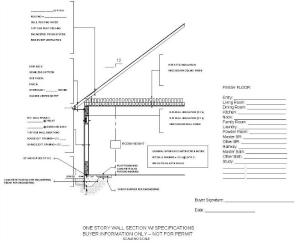Back to: Manage Your Subcontractor Team Online (Premium)
Systematize Your Subcontractor Team
In a small construction business, the quality of your subcontractor team and the work they do becomes critically important. The fact that you put the future of your business in the hands of others means that you have to have some way of controlling their actions. You must make sure that the way the subcontractor performs at your site mirrors the way you work at the site.
Make certain that —
1
2
3
4
5
There are three ways this can be accomplished.
1
2
3
You Do All the Work
This is the way the small builder did it fifty years ago. I can remember the first house built for my parents. The builder lived down the street from us, showed up every day, and built the entire house himself.
Today, the professionalism required in the codes and the need for licenses and specialized equipment almost preclude this type of building process.
The other problem with this method of building is that the builder is also the crew.
It’s a job, not a business.
You Watch All the Work Being Done
This is the model used by many small builders today. You show up on the job and watch, sometimes working with, whichever trades are scheduled for that day. The idea behind this is that you are watching their work and critiquing it in real time. If they drive a nail wrong, you are there to immediately correct their mistakes.
Of course, if you have two or three jobs going, you also have to be on those sites all day, every day. How does that work? You spend your time going from site to site. But who is watching the site you just left? And who has been watching the site you are headed to?
OK, so you hire a job superintendent. But then you have to check his work. So you are running all day long, trying to get the houses built like you want them built.
And you still have to do the selling. And the bookwork. And the scheduling.
No wonder you feel burned out. Now you have two or three, or more, jobs. Still no business.
You Build a Subcontractor Management System
If you want someone to know what you look like, you give them a picture. 
If you want your subcontractors to know your acceptable building practices, you give them the information in a comprehensive, systematic way. You transfer your knowledge and aesthetic relating to building a home to the subcontractor in writing so you can point to it, so they can refer to it, so you can depend on it being done that way, or else.
That is the premise behind the Terms & Conditions -> Scopes of Work -> Work Order -> Inspection Report process.
Terms and Conditions
Scopes of Work
Work Order
Inspection Reports
You can control the work done on your site by subcontractors
But, to make this system work, you have to be serious about the process. You have to ensure that each subcontractor understands that you intend to enforce the performance requirements, that you will inspect his work on each site to check that it is done to your standards, that he will not be paid until he meets those standards.
You don’t do the work. You manage the performance of others who do the work.